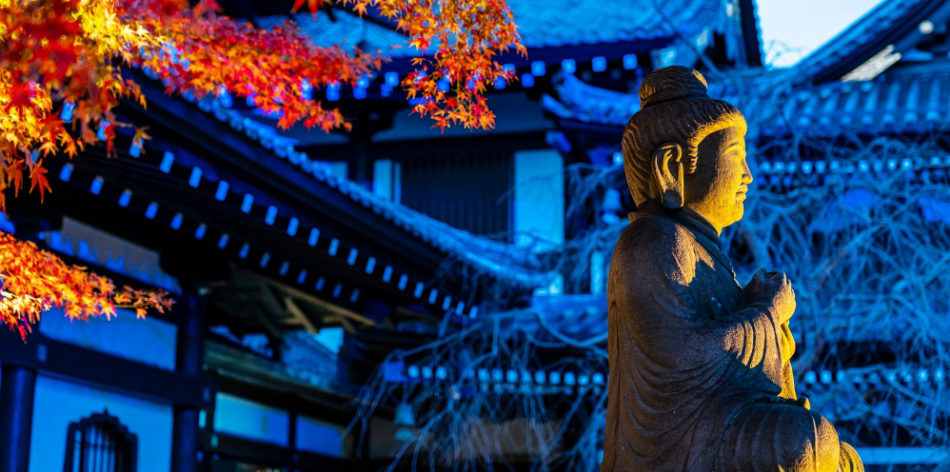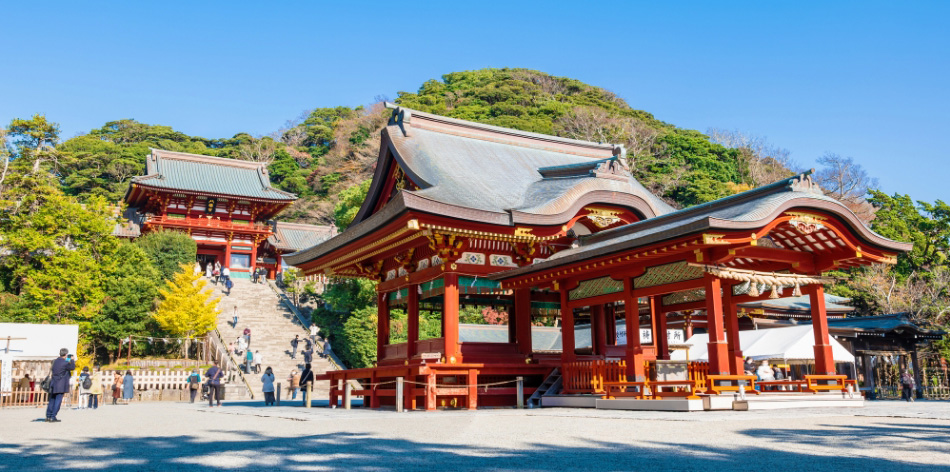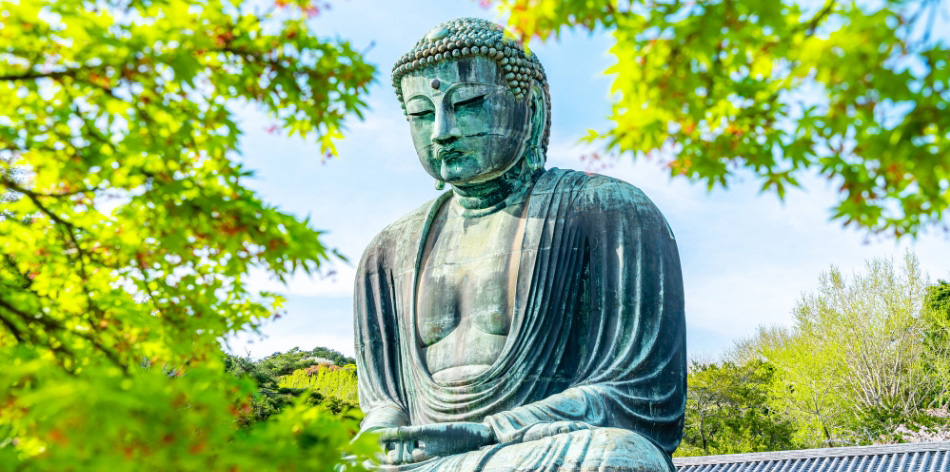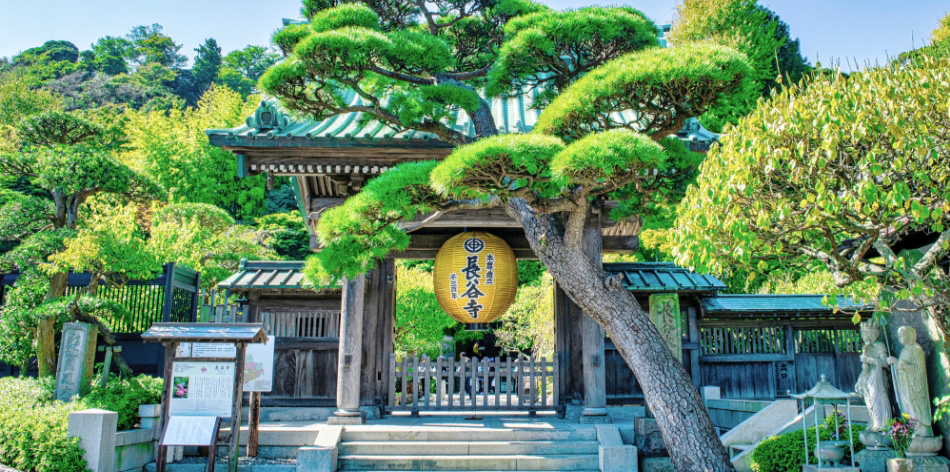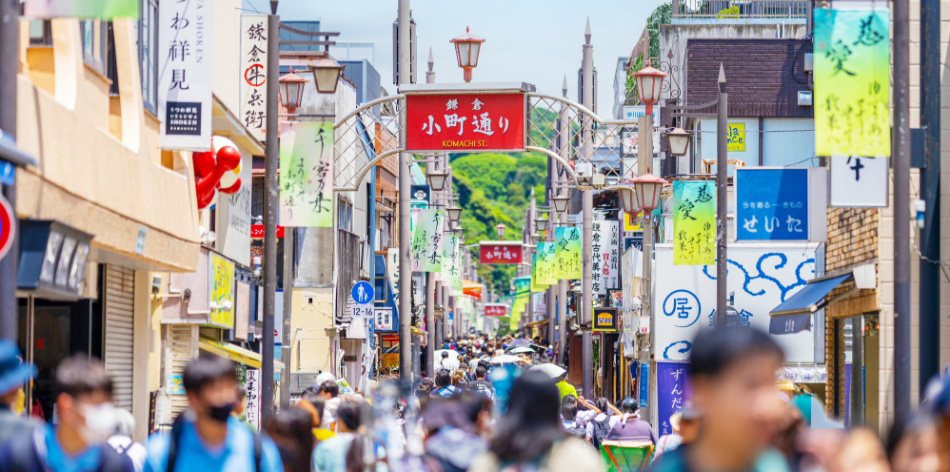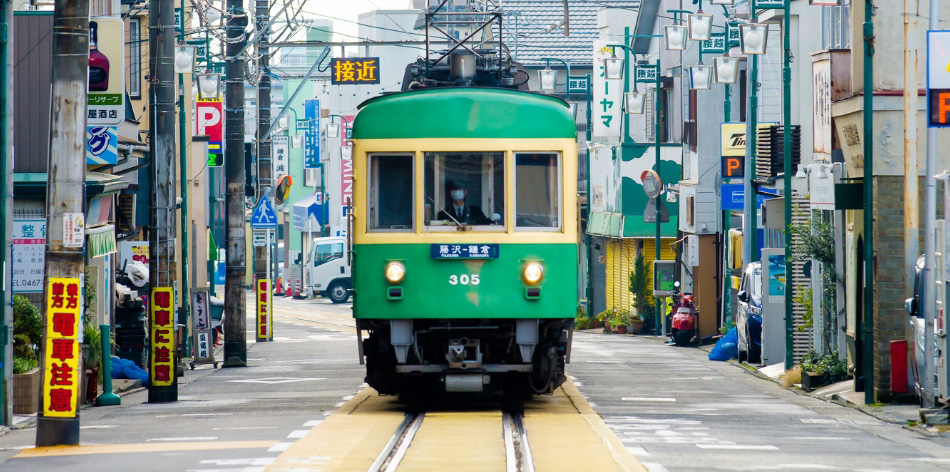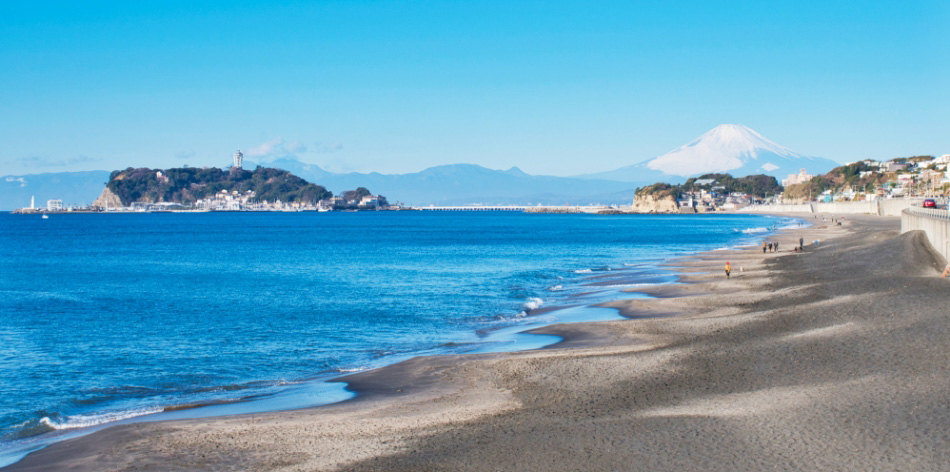The ancient city of Kamakura is home to numerous temples and shrines where history and culture thrive. These religious sites, preserving the essence of the Kamakura period, captivate visitors with their beautiful scenery changing throughout the four seasons.
Tsurugaoka Hachimangu Shrine
Tsurugaoka Hachimangu, symbolizing Kamakura, is a prestigious shrine founded by Minamoto no Yoriyoshi in 1063. It has been revered as the guardian deity of the Minamoto clan and protector of the samurai class. The majestic main shrine viewed from the grand stone stairway is breathtaking, attracting many tourists especially during cherry blossom and autumn foliage seasons. The grounds also include Minamoto no Yoritomo’s grave and the Kamakura National Treasure Museum, offering deep insights into Kamakura’s history.
The Great Buddha of Kamakura (Kotokuin)
The Great Buddha of Kamakura, seated at Kotokuin Temple, is a bronze statue of Amida Buddha completed in 1252 and designated as a National Treasure. Standing approximately 11.3 meters tall and weighing about 121 tons, its imposing figure leaves a profound impression on visitors across generations. While once housed in the Great Buddha Hall, it now sits in the open air, greeting worshippers with a serene expression. Visitors can also enter inside the Buddha statue for a small fee.
Hasedera Temple
Hasedera Temple, affectionately known as Hase Kannon, is a Jodo sect temple with the Eleven-Headed Kannon Bodhisattva as its principal deity. Said to have been established in 733, this historic temple features a wooden Kannon statue standing 9.18 meters tall, designated as a National Treasure. The temple grounds offer panoramic views of Kamakura city and Sagami Bay, and during hydrangea season, it becomes known as the “”Hydrangea Temple,”” attracting many visitors. The beautiful Japanese garden and large cave are also highlights.
Other Notable Sites
Kamakura offers many other fascinating temples and shrines. Kenchoji Temple, one of the Kamakura Five Great Zen Temples, is known as an ancient Zen monastery with a solemn atmosphere. Similarly, Engakuji Temple, also counted among the Five Mountains, provides a peaceful environment with its beautiful bamboo grove.
Tokeiji Temple has a history as Japan’s first “”divorce temple”” where women could seek refuge, and is also famous for its beautiful flowers. Meigetsuin Temple is known as the “”Hydrangea Temple,”” but its autumn foliage and early summer green maple leaves are equally impressive.
Hokokuji Temple’s bamboo garden is renowned for its beautiful bamboo grove swaying in the wind and is also popular as a place to enjoy matcha tea.
Each of these temples and shrines possesses its own unique charm, displaying different expressions throughout the seasons. When visiting Kamakura, take time to quietly tour these sacred places and experience their timeless history and culture.


